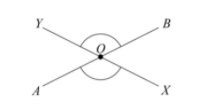In both theory and practice, exponential and logarithmic functions are important. We examine the graphs of exponential and logarithmic functions in this unit to discover how they are related. The exponential function is given by f(x) = ex, whereas the logarithmic function is given by g(x) = ln x, and the former is the inverse of the latter.
The domain of an exponential function is a set of real numbers, whereas the domain of a logarithmic function is a set of positive real numbers. A logarithmic function is the inverse of an exponential function. Logarithmic functions and exponential functions share the same base. The logarithm is an exponent. Exponential functions are written as f(x) = bx. In logarithms, the function f(x) is written as f(x) = logbx.
Definition
An exponential function is a mathematical function in the form fx=ax, where ‘x’ is a variable and ‘a’ is a constant, called the base of the function, and it should be greater than 0. The most commonly used exponential function base is the transcendental number e, which is approximately equal to 2.71828.
The function fx=ax is called an exponential function, where a is called base & a>0, a≠1.
Moreover, any function having x as power is called an exponential function.
Graph of the exponential function, y=ax
Graph of exponential function can be drawn based on the value of base a, when a>1
when 0<a<1.
For example, taking a=e, so the graph of y=ex is as follows:
Clearly, ex is an increasing function, as the value of function increases when x increases.
So, fx=axa>1 is an increasing function.
Clearly, 12x is a decreasing function, as the value of function decreases when x increases.
So, fx=ax0<a<1 is a decreasing function.
Domain and range of exponential function
From the graphs of the exponential function, the graphs are above the x-axis and values of function exist for all x∈R.
So, the domain of y=ax is R or (-∞,∞) and the range of y=ax is R+ or 0,∞.
Some important points related to exponential functions
x1>x2={ax1>ax2, if a>1 ax1<ax2, if 0<a<1
ax1>ax2={x1>x2, if a>1 x1<x2,if 0<a<1
One of the important points to remember about exponential functions is that the value of exponential function y=ax is always positive for any value of base a and exponent x.
Logarithmic functions
In mathematics, the logarithmic function is an inverse function to exponentiation. The logarithmic function is defined as
For x > 0 , a > 0, and a≠ 1,
y= loga x if and only if x = ay
Then the function is given by
f(x) = loga x
The base of the logarithm is a. This can be read as log base a of x. The two most common bases used in logarithmic functions are base 10 and base e.
The function fx=logax is called the logarithmic function, where x, a>0 & a≠1.
x =y
If y=a value of if y>a value of if y if y<a value of
Log is 1. Log is positive log is negative
Graph of logarithmic functions:
Graph of logarithmic function depends on the value of base a, i.e., when a>1 & when 0<a<1.
Some more graphs of logarithmic function based on different values of base
Domain and range of a logarithmic function
The domain of a logarithmic function is real numbers greater than zero, and the range is real numbers. The graph of y = logax is symmetrical to the graph of y = ax with respect to the line y = x. This relationship is true for any function and its inverse.
The domain of y=x is R+ , i.e., x∈(0,∞)
The range of y=x is R i.e., x ∈(-∞,∞)
Some important points related to logarithmic functions:
Exponential and logarithmic functions are inverse of each other.
y=ax⇒x=y
The graphs of y=logex and y=ex are symmetric with respect to line y=x.
y=x (a>1) is an increasing function and y=x (0<a<1) is a decreasing function.
a >b={a>mb, if m>1 a<mb, if 0<m<1
a <b={a<mb, if m>1 a>mb, if 0<m<1
x >y {x>y, if m>1 x<y,if 0<m<1
x {x<y, if m>1 x>y,if 0<m<1
ax =x, a>0,a≠1,x>0
ax =xa ;a>0,a≠1,b>0,≠1,x>0
x =1a ;x,a>0, 1
x =x a ;a,b>0≠1,x>0
For m,n>0, a>0 and a≠1
mn =m +n
mn =m -n
mn =n |m|
For x>0,a>0,≠1
x =1/n.x
xm =m/n.x
Examples of exponential and logarithmic functions
Example 1:
Find the domain of y=x .
Solution:
For y=x is defined when x≥0
⇒x≥1
⇒x≥1 (Inequality does not change as base e>1)
Hence, the domain of y=x is x≥1.
Example 2:
Find the domain of function fx=1(1-x) +x+2
Solution:
fx=1(1-x) +x+2 is defined if 1(1-x) & x+2 are both defined.
⸪x exists if x>0 & a>0, a≠1.
∴ 1(1-x) is defined when
1-x>0 & 1-x≠1⇒x<1 & x≠0 … (1)
Also, x+2 is defined if x+2≥0⇒x≥-2 … (2)
From eq. (1) & (2),
The domain of f(x) is x∈[-2,0)0,1
Example 3:
Find the domain of y=1+x3
Solution:
1+x3 is defined if 1+x3 >0
⇒1+x3 >1
⇒1+x3>1 (Inequality does not change as base 10>1)
⇒x3>0
⇒x>0
Hence, the domain of y=1+x3 is x>0.
Example 4:
If a+b2 =12(a +b ), then find the relation between a and b.
Solution:
Given: a+b/2 =12(a +b )
⇒a+b/2 =1/2(ab) ⸪log logm +log logn =loglog mn
⇒a+b2 =√ab ⸪ (mloglog n =log lognm)
⇒a+b/2=√ab⇒a+b-2√ab=0
⇒(√a-√b)2=0
⇒a=b
 Profile
Profile Settings
Settings Refer your friends
Refer your friends Sign out
Sign out







